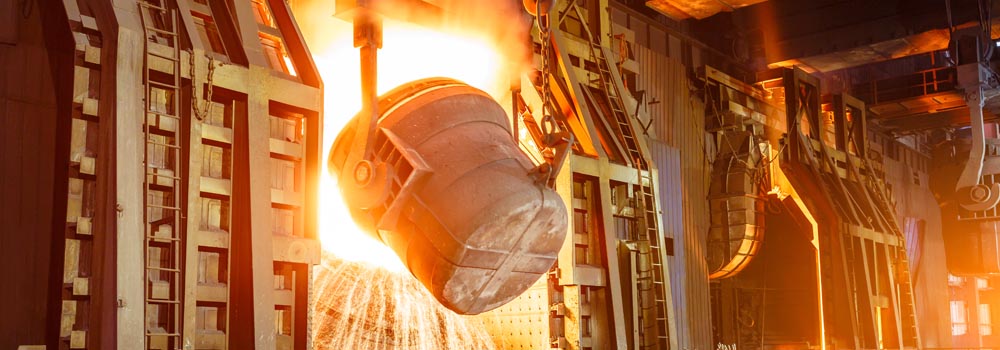Steel as a product is the world’s most important engineering and construction component in today’s modern world.
As versatile as it is, steel is not a single commodity. There are more than 3,500 different grades of steel with many different physical, chemical, and environmental properties.
Steel itself is an alloy of iron and carbon containing less than 2% carbon and 1% manganese and small amounts of silicon, phosphorus, sulphur and oxygen.
Most steel is produced using the BF (Blast Furnace) or BOF (Basic Oxygen Furnace), route or electric arc furnace (EAF).
Firstly, iron ores are reduced to pig Iron which is extracted from iron ore using coke and then further refined and converted to steel in the (Basic Oxygen Furnace) BOF method.
After this BOF process the steel is rolled as coil, plate, sections or bars. The EAF method of producing steel uses mostly recycled steel and electricity, and then the steel can be rolled again as coil, plate, sections, or bars.
Many steel products endure use for decades before ever being recycled into scrap metal. Hence, there are not adequate supplies of recycled steel to meet growing demand using the EAF steelmaking method alone. Demand is met through a combined use of the BF,BOF and EAF production methods.
Two-thirds of modern steels have been developed over the last 2 decades.
If the Brooklyn bridge was to be rebuilt today, engineers would only require one-third of the steel that was used originally in its design.
Products that are manufactured with new steels are stronger but up to 35% lighter than the types of steel used in previous years.
As an environmentally friendly product steel, is completely recyclable, possesses great strength, and, compared to other materials, requires comparatively low amounts of energy to manufacture and produce.
Innovational lightweight steel products, such as in automobile and rail vehicle manufacturing assist in saving energy and resources.
The steel industry has made great efforts to minimise and limit environmental pollution in the last few decades.
To produce one tonne of steel today requires just 40% of the energy it did 60 years ago, and dust emissions have been reduced by considerably more.
Steel is used in many sector of our lives; Such as car manufacturing, construction products, refrigerators, washing machines, cargo ships and surgical scalpels etc.
Steel’s unique magnetic properties make it a straightforward material to recover from the waste stream to be recycled.
The properties of steel remain unchanged no matter how many times the steel is recycled.

